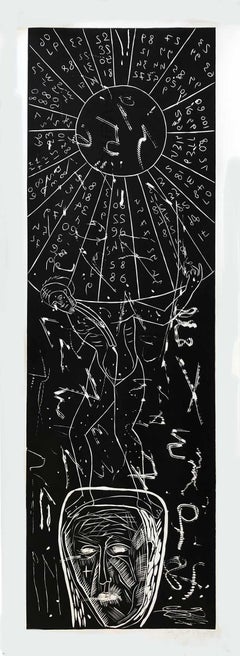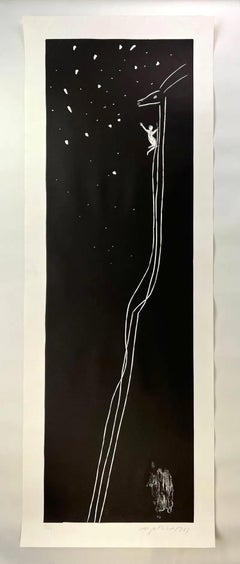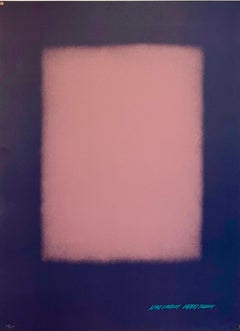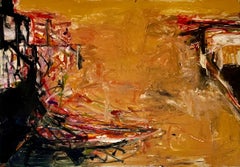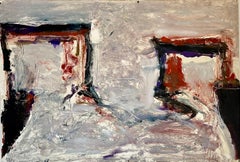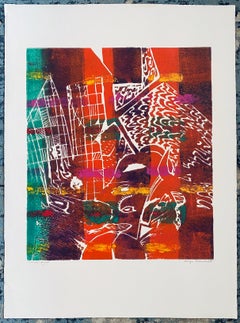Lions Gallery Abstract Prints
1980s Neo-Expressionist Abstract Prints
Linocut
1980s Neo-Expressionist Abstract Prints
Linocut
1980s Abstract Abstract Prints
Lithograph
1980s Abstract Expressionist Abstract Paintings
Mixed Media, Oil, Monotype
1980s Abstract Expressionist Abstract Paintings
Mixed Media, Oil, Monotype
20th Century Abstract Expressionist Abstract Prints
Color, Lithograph
1980s Abstract Geometric Abstract Prints
Lithograph, Screen
1980s Abstract Geometric Abstract Prints
Lithograph, Screen
1980s Contemporary Abstract Prints
Screen
20th Century Surrealist Abstract Prints
Lithograph
20th Century Surrealist Abstract Prints
Lithograph
20th Century Surrealist Abstract Prints
Lithograph
20th Century Surrealist Abstract Prints
Lithograph
20th Century Surrealist Abstract Prints
Lithograph
20th Century Surrealist Abstract Prints
Lithograph
20th Century Surrealist Abstract Prints
Lithograph
20th Century Surrealist Abstract Prints
Lithograph, Offset
20th Century Surrealist Abstract Prints
Lithograph, Offset
20th Century Surrealist Abstract Prints
Lithograph, Offset
20th Century Surrealist Abstract Prints
Lithograph, Offset
20th Century Surrealist Abstract Prints
Lithograph, Offset
20th Century Surrealist Abstract Prints
Lithograph, Offset
20th Century Surrealist Abstract Prints
Lithograph, Offset
20th Century Surrealist Abstract Prints
Lithograph, Offset
20th Century Surrealist Abstract Prints
Lithograph, Offset
20th Century Surrealist Abstract Prints
Lithograph, Offset
1960s Pop Art Abstract Prints
Screen
1970s Pop Art Abstract Prints
Screen
20th Century Contemporary Abstract Prints
Etching
1970s Abstract Expressionist Abstract Prints
Lithograph, Screen
20th Century Contemporary Abstract Prints
Etching
1970s Op Art Abstract Prints
Screen
1990s Abstract Expressionist Abstract Prints
Etching
1960s Pop Art Abstract Prints
Screen
1960s Pop Art Abstract Prints
Screen
1960s Pop Art Abstract Prints
Screen
1980s Pop Art Abstract Prints
Screen
Early 2000s Abstract Prints
Screen
1980s Abstract Expressionist Abstract Prints
Lithograph, Linocut
1980s Abstract Expressionist Abstract Prints
Lithograph, Linocut
Early 2000s Minimalist Abstract Prints
Color, Etching, Aquatint, Monoprint
Early 2000s Minimalist Abstract Prints
Color, Etching, Aquatint, Monoprint
Early 2000s Minimalist Abstract Prints
Color, Etching, Aquatint, Monoprint
Early 2000s Minimalist Abstract Prints
Color, Etching, Aquatint, Monoprint
Early 2000s Minimalist Abstract Prints
Color, Etching, Aquatint, Monoprint
1950s Modern Abstract Prints
Lithograph
1980s Abstract Prints
Lithograph
1980s Abstract Prints
Lithograph
21st Century and Contemporary 85 New Wave Abstract Prints
Screen
Early 2000s Neo-Expressionist Abstract Prints
Screen
Mid-20th Century Abstract Abstract Prints
Lithograph
20th Century Abstract Expressionist Abstract Prints
Mixed Media, Etching
Late 20th Century Abstract Abstract Prints
Lithograph
Late 20th Century Abstract Abstract Prints
Lithograph
1980s Abstract Prints
Lithograph
Late 20th Century Abstract Abstract Prints
Etching
Late 20th Century Abstract Abstract Prints
Etching
1990s Abstract Abstract Prints
Aquatint, Screen
1980s Modern Abstract Prints
Screen
Late 20th Century Contemporary Landscape Prints
Etching
